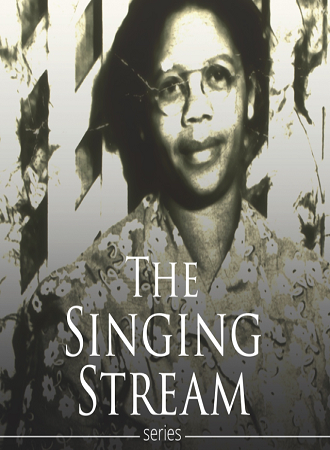
The Singing Stream Series: A Black Family Chronicle; Reunion The Grandchildren 1985, 2015
Distributed by Davenport Films, davenportfilms@gmail.com, 540-592-3701
Produced by Tom Davenport & Landis Family Grandchildren
Directed by Tom Davenport
DVD , color, 112 min.
Middle School - General Adult
African Americans, American South, Family, Music, History, Women
Date Entered: 11/02/2018
Reviewed by Winifred Fordham Metz, University of North Carolina at Chapel HillWith The Singing Stream Series, director Tom Davenport has repackaged and combined two independent films presenting the life and legacy of Landis family matriarch Bertha Mangum Landis.
Filmed over the course of five years and premiering on PBS in 1985, director Tom Davenport introduces the Landis family of Creedmoor, NC in the first of his two films – The Singing Stream: A Black Family Chronicle. At once a celebration of family, faith, strength and song, the film also effectively serves as a U.S. history lesson. Born the same year as the Wilmington Race Riot in 1898, Mrs. Landis’ candid and insightful interviews speak directly to Jim Crow, the depression, tenant farming and the New Deal, northern migration to early civil rights and on through the early effects of Reaganomics.
Throughout the film, we see a deeply grounded and supremely thoughtful woman reflecting on how she successfully navigated undeniably rocky terrain to grow a family eleven strong. Early on, Mrs. Landis counseled her husband Coy on the New Deal, successfully applying and securing rights to buy their family home in the 1930’s. One of the ten families chosen out of 300+ applicants at the time in their rural part of NC, Mrs. Landis and her husband purchased farmland and built the house where they went on to raise eight sons and three daughters. Along the way, Mrs. Landis looked to instill a craft and skill that would “bring joy and happiness to her children’s lives.” Coming from a family rich in musical experience herself and recognizing the same with her husband’s childhood, Mrs. Landis thought the “two streams of musicality” would blend well for her children, so she taught them to sing. Her sons go on to carry this through their lives, singing in groups famous to the area; Five Golden Voices and the Golden Echoes as well as leading choirs at their respective churches. And throughout the film, Davenport records many of their songs.
Much of the success of the film can be attributed to the level of access that Davenport is afforded so graciously by Mrs. Landis, welcoming the camera into her home and community. As Davenport silently and steadily trains his camera on the family, we see daily life within the home, at church and among the larger community and hear many a conversation around the kitchen table, by the barbeque and on the front porch. While every conversation offers ample insights into histories, socio-economics and politics of the day, the film remains, at its heart – a very vivid slice of life reflecting a warm, close-knit American family.
In a Reunion The Grandchildren, director Davenport returns to Creedmoor thirty years later in 2015 to continue filming the Landis’ story. We learn that matriarch Bertha Mangum Landis passed away in 2000 (at the age of 102) as have all of her children and siblings save her daughter Priscilla and Mrs. Landis’ brother. We also learn that the Landis family has grown from 11 to 99 respectively.
Unlike the original film, this documentary focuses on just a couple of the grandchildren instead of taking a broader approach but Davenport is still afforded good access and engages with two of the grandsons effectively. Much of the footage seems to cover the Landis’ annual reunion that has happened on the 4th weekend of August since 1934.
Here, hearth and home remains central as do reflections on the legacy of Mrs. Landis. Much like the candid interviews with Mrs. Landis previously, her grandsons address social dynamics of the south, multi-cultural relationships, as well as rural economies and growth.
In tandem with his first film on the Landis family, Davenport’s second film provides a nice amount of information and closure expected with a reunion.
This two-film series is relevant to these subject areas: African American Studies, American Studies, American South, Music, Southern studies, U. S. History, and Women’s Studies.